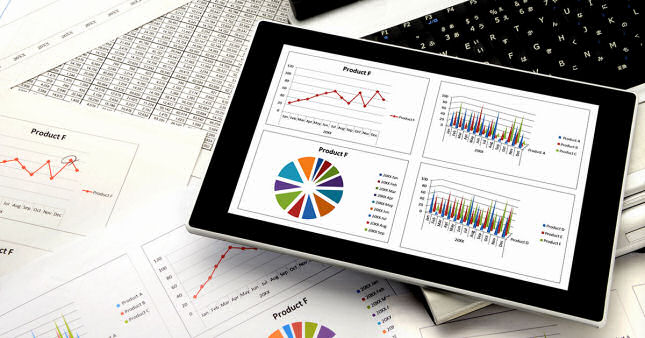The capital asset pricing model (CAPM)
What is CAPM and the capital asset pricing model?
The capital asset pricing model is a formula that can be used to calculate an asset’s expected return versus its systematic risk. An asset’s expected return refers to the loss or profit that you anticipate based on its anticipated or known rate of return. The capital market line is a tangent line and represents asset and investment mixtures that provide an optimal combination of risk and returns.
You figure out the expected return of an asset by multiplying the potential outcomes by the chances that they will occur. Finally, you total your results. The systematic risk is the risk that is unpredictable and that is intrinsic to the whole market instead of a specific industry or stock.
Why is CAPM important to understand in investing?
The CAPM gives investors a simple calculation that they can use to get a rough estimate of the return that they might expect from an investment versus the risk of the outlay of capital. The capital asset pricing model helps you to understand the importance of diversification. Investors who follow the CAPM model choose assets that fall on the capital market line by lending or borrowing at the risk-free rate.
Diversification is the act of including different kinds of asset classes in a portfolio. Diversification of the assets in your portfolio can help you to hedge against its risk.
Statistics
People in different generations in the U.S. vary in their willingness to take on substantial or above-average risk in their investments. Data from Statista shows that 36% percent of millennials are willing to take on more risk while 45% of members of generation X are willing to do so. The willingness to take on more risk falls sharply among older generations at 31% of baby boomers and 18% of the greatest generation.
Around 55% of U.S. households are invested in the stock market. This is less than the peak of 65% before the stock market recession of the mid-2000s.

Background on CAPM
William F. Sharpe, Jack Treynor, Jan Mossin, and John Lintner independently built upon Harry Markowitz’s ideas on Modern Portfolio Theory and diversification and introduced the capital asset pricing model in the 1960s. Modern Portfolio Theory is a model of investing model in which an investor takes a small amount of market risk to maximize his or her returns in a portfolio.
In 1972, Fischer Black developed a model that does not assume the existence of an asset without risk called the Black CAPM or zero-beta CAPM. This model helped with the general acceptance of CAPM and choosing stocks on the capital market line.
Systematic risk vs. unsystematic risk
Unsystematic risk is a type of risk that affects a particular company. Unsystematic risk is also referred to as non-systematic risk. You cannot completely dissolve unsystematic risk with diversification. Instead, unsystematic risk can only be reduced by allocating your assets or hedging.
When you hedge, you offset an investment against another one. Your asset allocation is how you apportion your capital assets in your investment account. Allocating your assets helps you to protect against risk.
The CAPM formula
The CAPM can be calculated with the CAPM formula as follows:
ERi = βi(ERm-Rf)
ERi = Expected return of investment
Rf = Risk-free rate
βi = Beta of the investment
ERm = Expected return of the market
(ERm – Rf) = The market risk premium, which is calculated by subtracting the risk-free rate from the expected return of the investment account.
The benefits of CAPM include the following:
- Ease of use and understanding
- Accounts for systematic risk
The limitations of CAPM include the following:
- Experts believe it is too simplistic because it does not cover all of the risks that are involved with investing
- It does not correctly evaluate reasonable returns
- Assumes that you can lend and borrow at a risk-free rate
- Returns that are calculated evaluate past returns and might not accurately reflect future returns
Discount rate
The discount rate may be used to refer to the interest rate that is charged to financial institutions by the Federal Reserve for loans that they take out. The discount rate may also be used to refer to rate of interest that is used in the analysis of the discounted cash flow of investments.
The discount rate and the discounted cash flow of investments can help you to determine the current value of your future flows of cash that you can expect to receive in the future. When you use the discount rate in the context of the discounted cash flow analysis, you are using the discounted cash flow to analyze the present value or worth of your expected future cash flows.
This takes into account the time value of money. The time value of money represents the idea that a sum of money that you currently hold is worth more than the same amount of money in the future. Under the time value of money, your current money could potentially grow more because of the potential returns that you could enjoy if it was invested.

Beta
Stock beta or βi is a measurement of the volatility of a stock as compared to the market. It can be used to compare a particular stock’s risk to the risks of other stocks. You can measure βi by looking at how a stock has performed in the past to evaluate how it might move as it relates to the market.
Volatility is a measurement of how the returns for an index or security are distributed. Assets that are more volatile have a higher risk than assets that are less volatile. This is because of the expectation of its unpredictability. You can calculate βi to judge a stock’s volatility and the systematic risk.
It is used as one indicator of the market and systematic risk and volatility. A stock’s βi represents the potential for the actual return of an investment differing from its expected return. A stock’s βi looks at the chance that you might lose any or all of the original amount that you invested in the stock.
You can calculate the standard deviation of the previous returns or the average returns of an investment to measure different types of risk. When you assess risk, it is important for you to look at the variability of the price of a stock. When you are trying to figure out the short-term risk, you will use price volatility and βi.
To calculate β, you will use regression analysis, This helps to value assets when you are comparing multiple variables.
β = Covariance/Variance
To calculate β, collect the closing prices for your stock as well as for the index that you are using as your benchmark over a chosen period. Separately calculate the price change for your stock and the index using the following formula:
((Today’s price – Price yesterday)/Yesterday’s price) x 100
Next, compare the stock and the index to see how they move with each other as compared to how the index moves by itself. The result that you will obtain is the βi. The formula is as follows:
Covariance ÷ Variance which is the stock’s daily change and index’s daily change ÷ Index’s daily change
If you obtain a positive value, it means that the stock tends to move in the same direction as the market. You can find these values published by Yahoo! Finance here.
The market’s β is 1.0. Individual stocks are evaluated and ranked by how much they deviate from the market’s standard. Stocks that change more than the market over a time period have a β of more than 1.0. These stocks are considered to be riskier. However, they may also have the potential of giving you higher returns.
Stocks that do not change as much as the market have a β of less than 1.0, lower risk, and lower returns.
You measure the β of a stock against a stock index. Normally, the one that is chosen is the S&P 500. The S&P 500 is used because it includes many large-cap stocks and many different sectors.
Alpha
The alpha (α} is a measurement that compares the performance of an investment to ah index like the S&P 500. It is used by investors to help them to understand how a security is performing in comparison to the whole market.
To calculate α, you subtract an investment’s total return from a benchmark in the same class of assets using the following formula:
α = R – Rf – β(Rm-Rf)
More complex measurements of α also include the capital asset pricing model and risk-adjusted measures by using the β and the free risk rate.

Security market line (SML)
The security market line is a characteristic line that appears on a chart that depicts the CAPM. It shows the market or systematic risk of various securities compared to the whole market’s expected return at one point in time. You can use the following formula to determine the required return:
Required Return = Risk-Free Rate of Return + β(Market Return – Risk-Free Rate of Return)
The X-axis is the risk or β, and the Y-axis is the expected return. The market risk premium is where it is on the security mark line.
Efficient frontier
The efficient frontier is an investing model that depicts a group of investment portfolios. It shows you the investments that might provide a higher expected return for the lowest level of risk. You should aim for the hyperbola, which is the efficient frontier.
Investment mixes that fall below the line and to its right are inferior because their returns do not match the level of risk. An investment’s compound annual growth rate or CAGR is normally used as the return. The annual standard deviation shows the risk. The efficient frontier is the basis for MPT.
You should aim to include a mix of assets in your investment account that depicts the efficient frontier because they normally represent greater diversification.
Types of risk in stocks and investment mixes
Aggressive investors are people who can tolerate high levels of risk. While aggressive investments carry high levels of risks, they can also provide greater rewards. Aggressive stocks normally are highly sensitive to the overall market. They tend to have larger fluctuations than the overall market experiences.
Moderate investors invest in stocks with a medium amount of risk. These investors normally have more than five years to invest. Conservative investors may choose defensive stocks because they are isolated from large movements of the market. By contrast, cyclical stocks are the most sensitive to the economic business cycle. Buying cyclical stocks can give you an added layer of protection against negative events.

Why people choose M1 Finance
There are many reasons why you should trust M1 Finance for your investments. You can begin investing for free when you open your investment account. M1 Finance is highly secure and does not charge trading fees or commissions.
You can open a free SIPC-insured investment account at M1. The SIPC protects securities customers of its members up to $500,000 for losses that are caused by unauthorized trades, fraud, or when a firm goes bankrupt. You can manage your exposure to risk with M1 Finance by taking a modern approach. In addition to your investment account, you can also maximize your retirement savings with free IRAs.
M1 Finance makes diversification simple and helps to ensure that you are always fully invested. M1 allows you to invest in fractional shares to help you to be fully invested.
Open your account today
Open your account today with m1 Finance, and select stocks that match your risk. Create a custom portfolio or choose one from more than 80 that have been tailored to meet different risk tolerance levels and financial goals.
The platform helps to make investing simpler and more accessible to everyone. You can log in to your account from anywhere on your smartphone, tablet, or desktop. M1 Finance allows everyone to invest without being charged any commissions or fees to manage their accounts. This allows your savings to grow more over time.
The platform is also intuitive, and it saves time by automatically reinvesting your dividends and rebalancing your securities. This helps to make certain that your account will continue to meet your target asset allocations so that you can continue working to meet your financial goals. M1 Finance blends key investment principles with cutting-edge technology to provide you with the best possible results.
